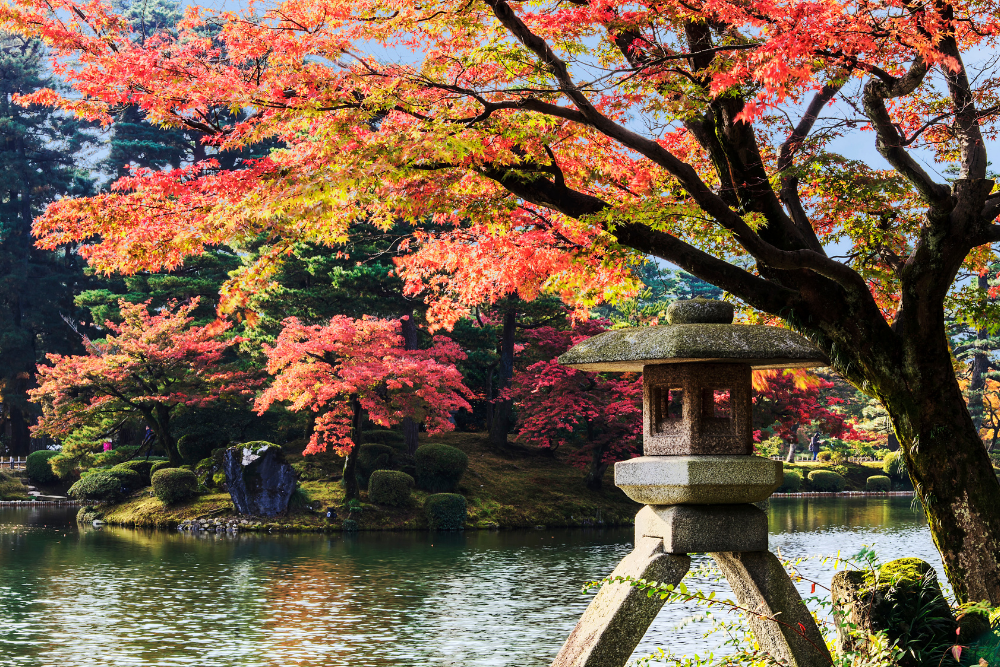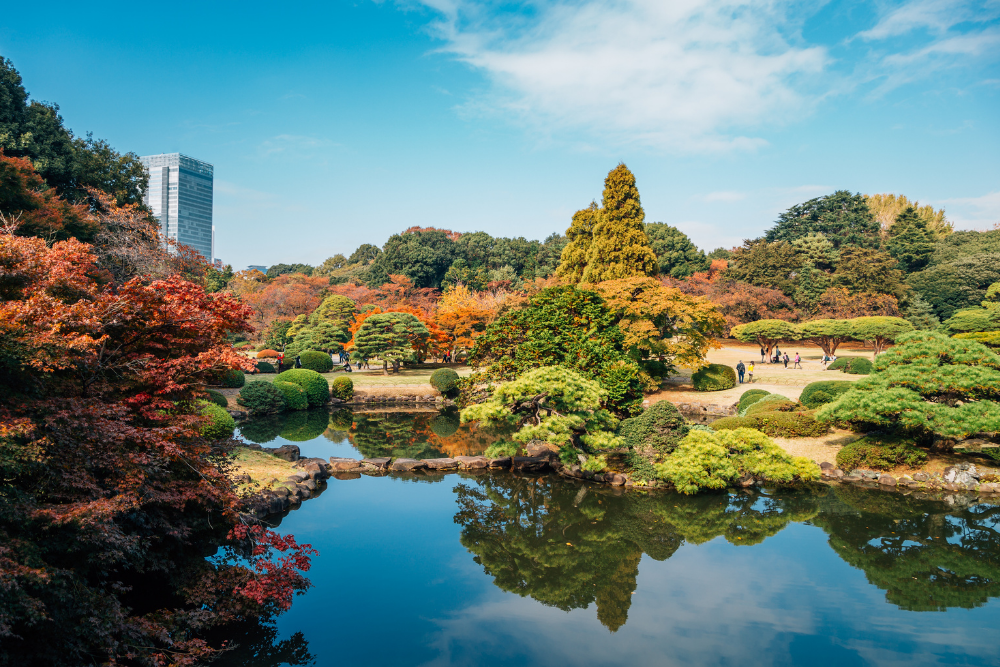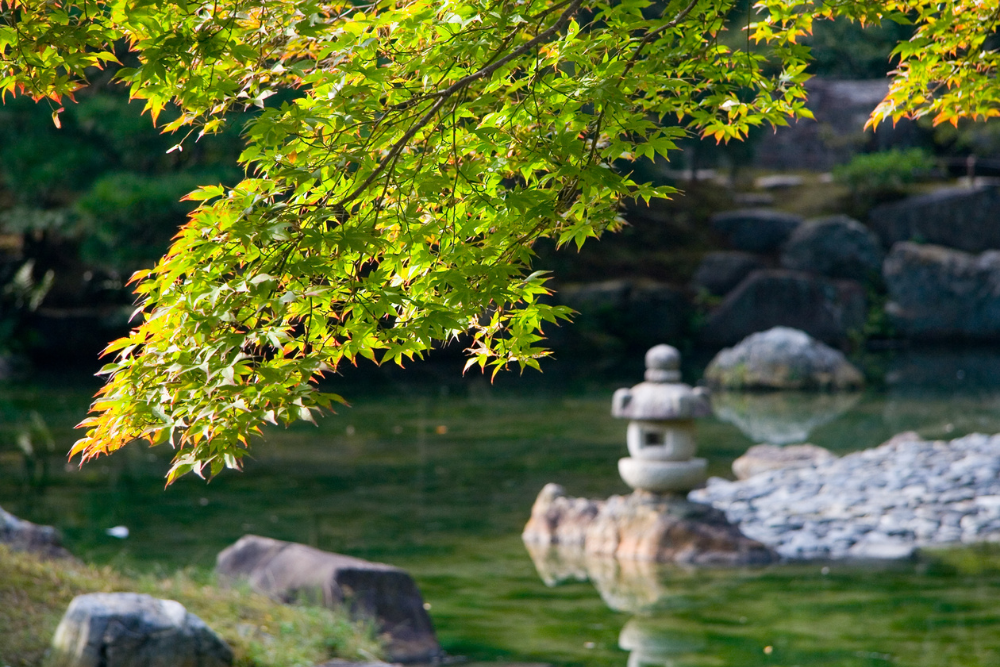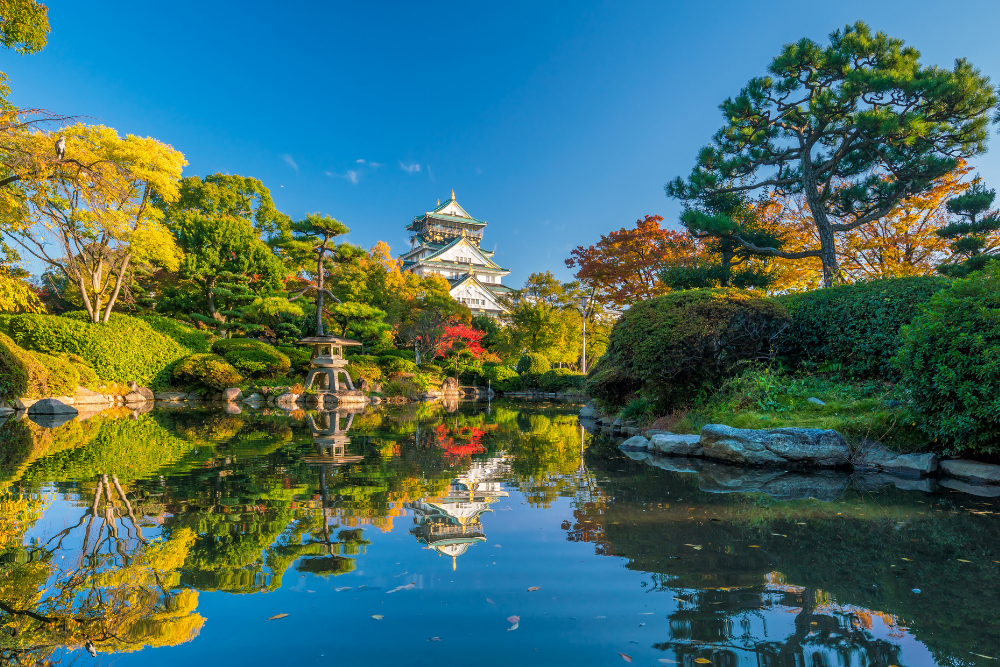Japan is home to some of the most breathtaking gardens in the world, blending nature, architecture, and philosophy into harmonious landscapes. From meticulously designed feudal-era strolling gardens to serene temple gardens, these green spaces offer a peaceful escape from bustling city life. Whether you’re in Tokyo, Kyoto, Osaka, or other major cities, here are the most beautiful gardens to visit in Japan.
1. Kenrokuen (Kanazawa) – One of Japan’s Three Great Gardens
Kenrokuen, located in Kanazawa, is widely regarded as one of Japan’s most exquisite gardens. Designed as a daimyo (feudal lord) strolling garden, it embodies the six ideal garden attributes: spaciousness, seclusion, antiquity, human ingenuity, water features, and scenic views. Visitors can admire seasonal beauty, from cherry blossoms in spring to snowy landscapes in winter.
Highlights:
- The famous Kotoji-toro Stone Lantern, a symbol of Kanazawa
- The oldest fountain in Japan, powered by natural water pressure
- Stunning seasonal displays, especially autumn leaves and winter snow
Best Time to Visit:
- Spring (March–April): Cherry blossoms
- Autumn (November): Vibrant foliage
- Winter (December–February): Snow-covered scenery
2. Kōraku-en (Okayama) – A Spacious Edo-Era Masterpiece
Another of Japan’s Three Great Gardens, Kōraku-en in Okayama was designed in the Edo period (1603–1868) as a retreat for feudal lords. The garden features vast open lawns, scenic ponds, and a stunning backdrop of Okayama Castle. Unlike many Japanese gardens, it includes wide, open spaces, making it unique among its counterparts.
Highlights:
- Stunning views of Okayama Castle from the garden
- A traditional teahouse overlooking a tranquil pond
- Seasonal events such as nighttime illuminations in autumn and summer
Best Time to Visit:
- Spring for cherry blossoms
- Autumn for colorful maple leaves
3. Ritsurin Garden (Takamatsu) – A Hidden Gem of the Shikoku Region
Ritsurin Garden, located in Takamatsu, is one of Japan’s largest and most beautiful strolling gardens. With six ponds and 13 landscaped hills, it was designed to be enjoyed from multiple perspectives as visitors walk along its winding paths. The garden also offers boat rides through its ponds, providing a unique view of the scenery.
Highlights:
- Teahouses offering traditional matcha experiences
- Rowboat rides through the garden’s ponds
- A stunning backdrop of Mount Shiun
Best Time to Visit:
- Spring for cherry blossoms
- Autumn for colorful foliage
4. Shinjuku Gyoen (Tokyo) – A Blend of Japanese, English, and French Styles
Shinjuku Gyoen is Tokyo’s most famous garden, offering a mix of Japanese, English, and French garden styles. The vast park-like setting provides a relaxing escape in the heart of the bustling city. It is especially popular during cherry blossom season, as its diverse trees bloom in different phases, extending the sakura viewing period.
Highlights:
- A diverse mix of garden styles
- One of the best cherry blossom spots in Tokyo
- A peaceful green oasis in the middle of the city
Best Time to Visit:
- Spring (March–April) for cherry blossoms
- Autumn (November) for golden ginkgo and red maple leaves
5. Kiyosumi Garden (Tokyo) – A Hidden Edo-Era Gem
Kiyosumi Garden is a lesser-known strolling garden in Tokyo featuring large stepping stones, a pond with koi fish, and beautifully arranged rocks. Originally built as a feudal lord’s residence, the garden is now a peaceful retreat, perfect for those looking to escape the crowds.
Highlights:
- A large pond reflecting the seasonal landscape
- Unique stepping stones for an immersive experience
- A peaceful, less touristy alternative to other Tokyo gardens
Best Time to Visit:
- Year-round, with stunning seasonal changes
6. Katsura Imperial Villa (Kyoto) – A Masterpiece of Japanese Garden Design
Considered one of the finest examples of Japanese garden design, Katsura Imperial Villa in Kyoto is a harmonious blend of nature and architecture. The garden features winding pathways, elegant teahouses, and carefully placed rocks and trees, creating an ever-changing landscape as visitors walk through it.
Highlights:
- A highly detailed strolling garden
- One of the most authentic examples of Japanese aesthetics
- Requires advance reservations for guided tours
Best Time to Visit:
- Autumn (November) for breathtaking foliage
- Spring (March–April) for a peaceful hanami experience
7. Kōdai-ji Temple Garden (Kyoto) – A Zen Rock Garden with Illumination Events
Kōdai-ji, a beautiful Zen temple in Kyoto, is home to one of the most spectacular rock gardens in Japan. The temple grounds also feature a bamboo grove, a reflective pond, and atmospheric night-time illuminations during cherry blossom and autumn seasons.
Highlights:
- A serene Zen rock garden
- A small yet beautiful bamboo grove
- Seasonal light-up events in spring and autumn
Best Time to Visit:
- Spring (April) for illuminated cherry blossoms
- Autumn (November) for glowing red maple leaves
8. Osaka Castle Park (Osaka) – A Garden with a Historic Backdrop
Osaka Castle Park is one of the best places to see cherry blossoms in Osaka, with over 3,000 sakura trees blooming around the castle. The Nishinomaru Garden, a paid section within the park, offers a stunning view of Osaka Castle framed by cherry blossoms, making it a favorite hanami spot.
Highlights:
- 3,000 cherry trees creating a pink wonderland in spring
- Scenic views of Osaka Castle
- A spacious green space perfect for picnics
Best Time to Visit:
- Spring (late March–early April) for cherry blossoms
- Autumn (November) for golden ginkgo trees
Conclusion
Japan’s gardens are more than just beautiful landscapes—they are expressions of culture, philosophy, and history. Whether you are exploring the feudal-era elegance of Kenrokuen, the imperial refinement of Katsura Villa, or the contemporary tranquility of Shinjuku Gyoen, these gardens provide a serene escape from urban life. No matter the season, each garden offers a unique perspective on Japan’s natural beauty and artistic heritage.












